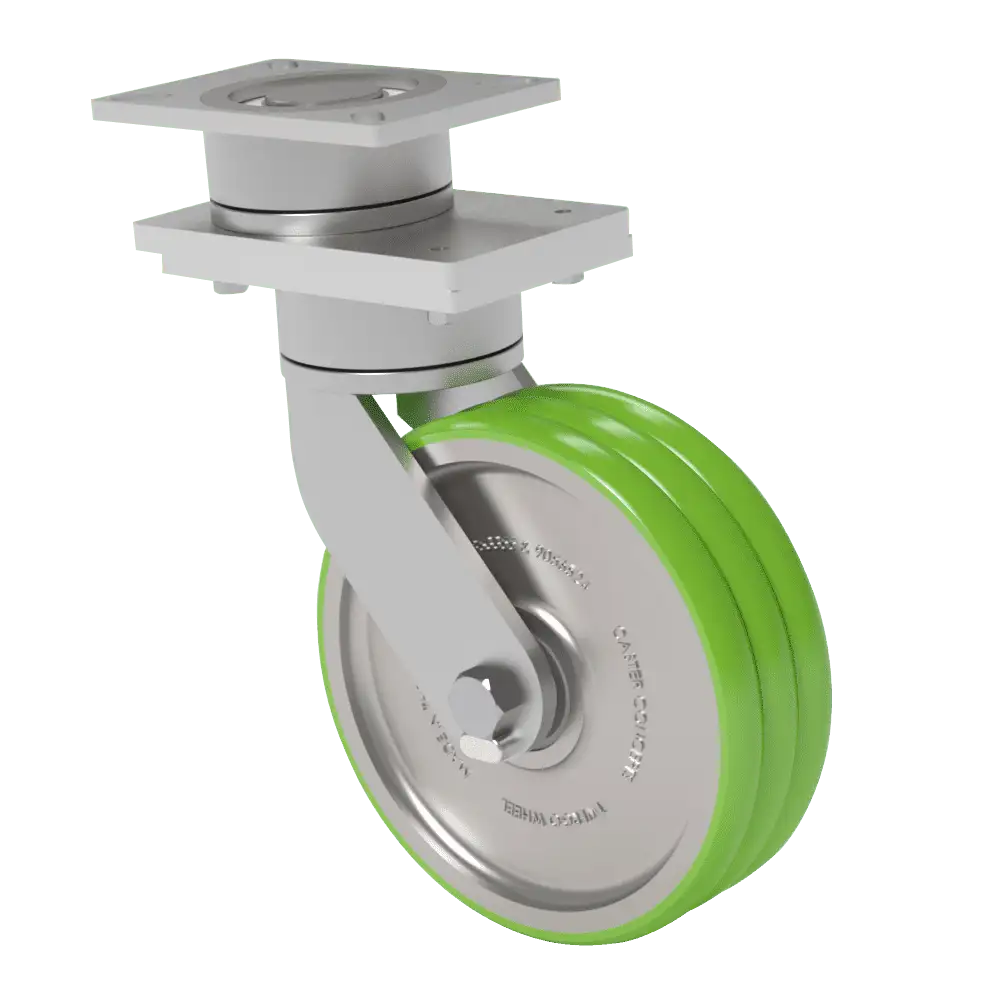

Swivel lead, also called swivel offset or swivel radius, is important in heavy-duty industrial caster design for several reasons.
Swivel lead is the distance from the vertical centerline of the caster swivel section to the vertical centerline of the wheel. When designing a heavy-duty industrial caster for industrial applications, determining correct swivel lead helps optimize your caster performance. At Caster Concepts Inc., we understand that the incorrect configuration can cause safety issues and other problems. This article discusses how lengthening the swivel lead impacts caster performance.
Improved ergonomics – Lengthening the swivel lead while keeping wheel size and material constant makes it easier to turn a cart fitted with industrial casters. It reduces the force required to begin motion, which in turn lessens fatigue when employees must operate carts manually. However, increasing swivel lead on industrial casters also enlarges the turning radius, thus reducing the ability for true, 90-degree turns. In casters used in both manual and powered towing applications, the correct swivel lead can significantly impact the implementation of the application.
Caster Load Rating – Increasing the swivel lead beyond the radius of the swivel section diameter reduces the load rating of the caster. This is because the moment (force multiplied by a distance), of the swivel section increases. When designing casters this should be accounted for, as the casters may be easier to swivel but the total load rating can be reduced. There is always a trade-off between maximizing loads, while attempting to maintain the present force required to swivel the caster.
Tracking – In a power towing application, a longer swivel lead allows the cart to more closely track the tugger pulling the cart. The longer lead also helps reduce caster flutter, which is impacted by the lead, wheel mass, wheel material. This is very important because caster flutter – when the caster begins to shimmy and vibrate during towing – reduces the ability of the cart to track the towing device. When carts in a train flutter it can be very dangerous, causing injuries if casters fail or items fall off the cart.
As you can see, changes in swivel lead can positively or negatively impact caster performance during an application, so it’s critical to design swivel lead properly.
On the upside, swivel lead can reduce force required to swivel the caster, and caster flutter. On the downside, changes in swivel lead can reduce carrying capacity and increase caster flutter in powered applications.
Determining the proper swivel lead requires significant planning and design and at Caster Concepts We Build Trust by employing expert engineers who will help you determine the best swivel lead for your application. Investing time on the front-end minimizes the risk of down-time or worse, employee injuries.
For further information please contact us at customercentral@casterconcepts.com or call 517-680-7950.